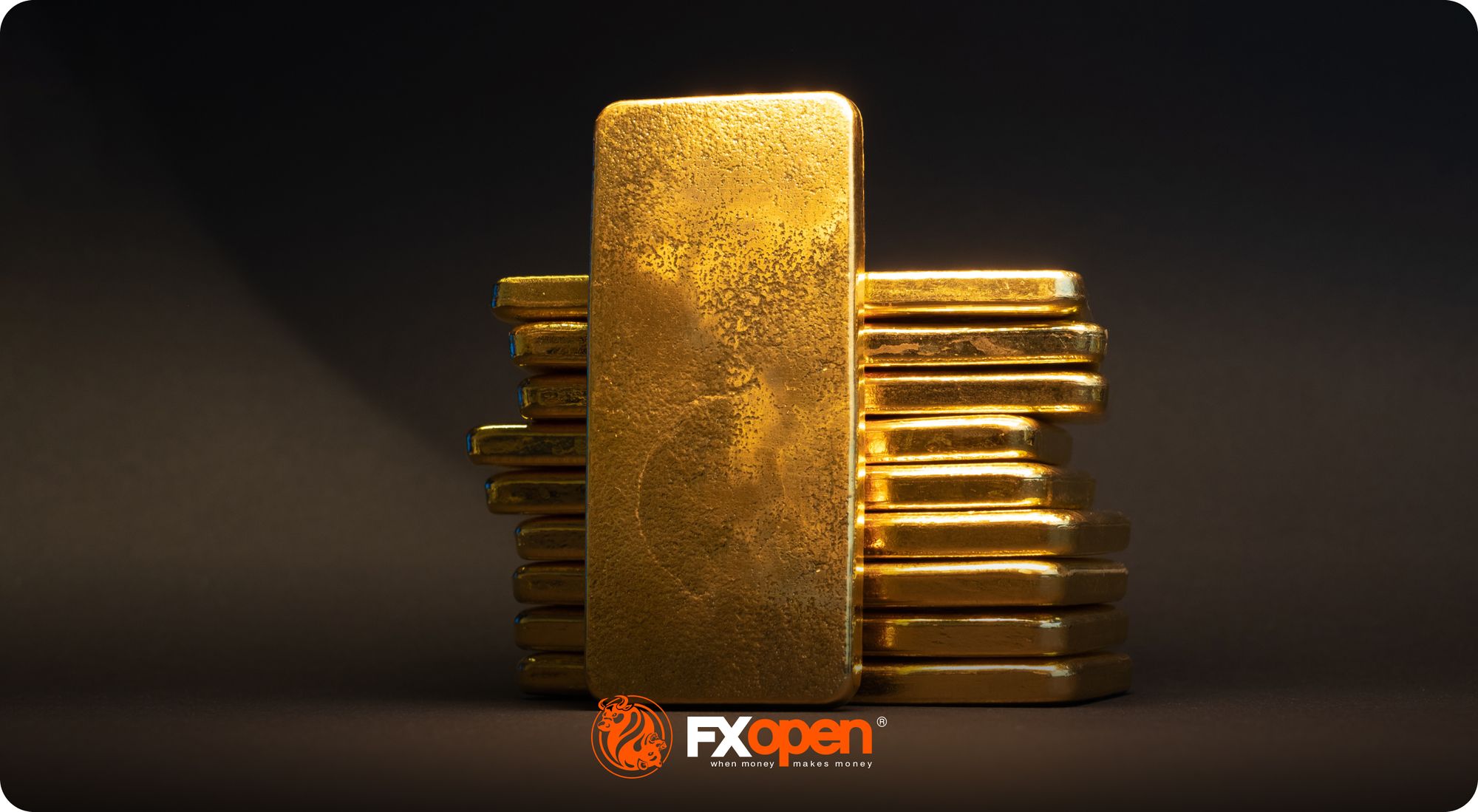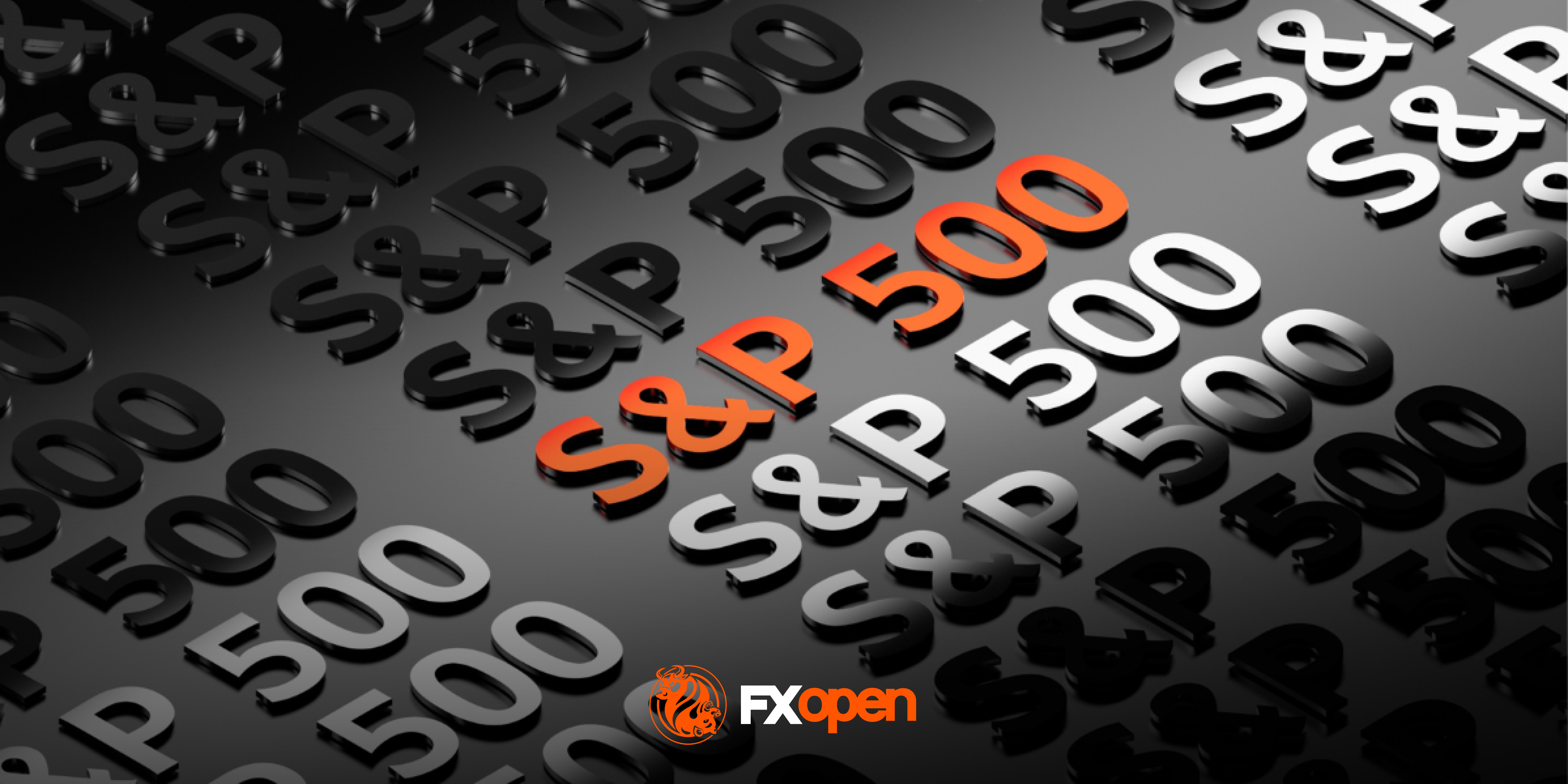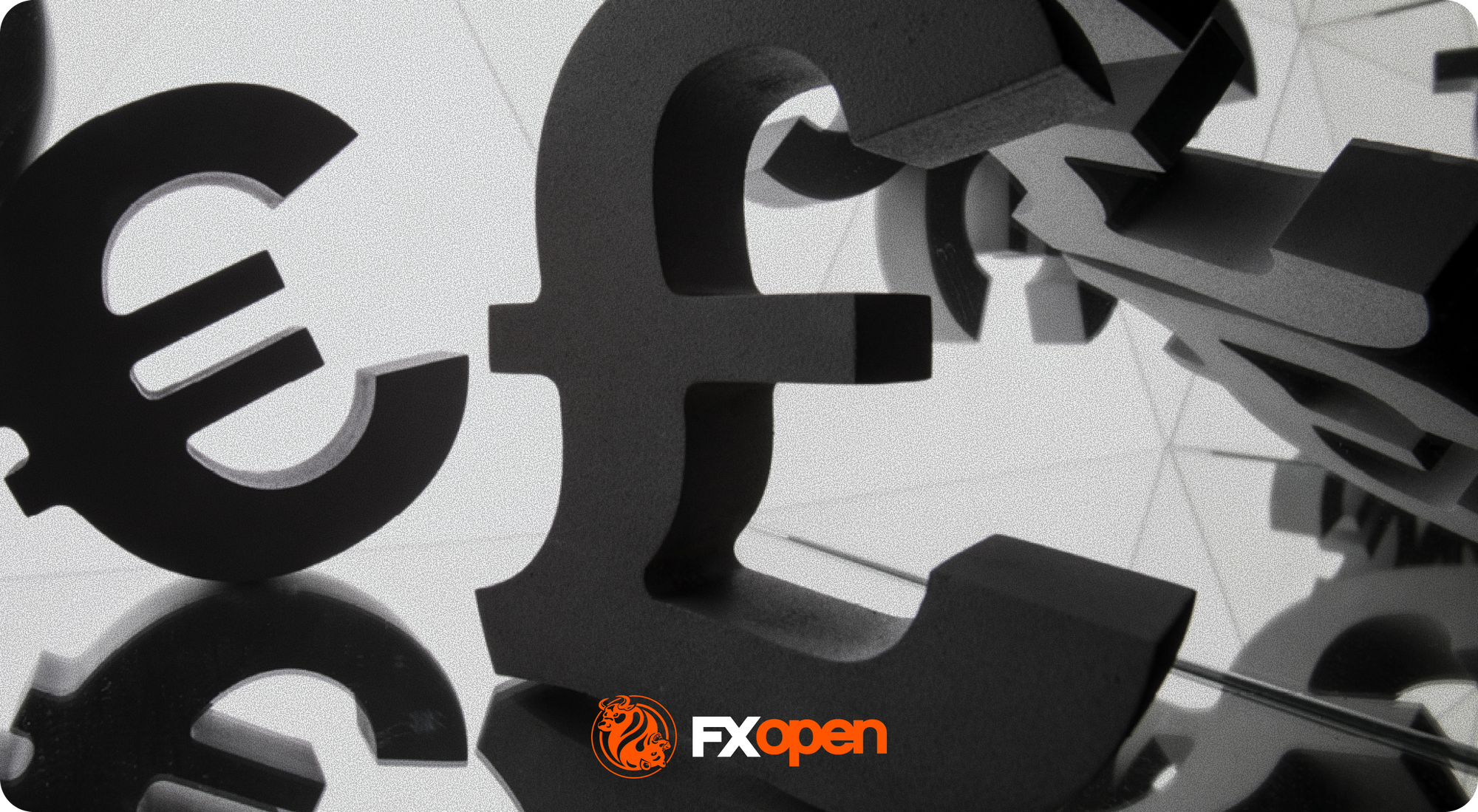FXOpen

Gold has long been viewed as a so-called safe-haven asset, especially during times of economic uncertainty, inflation, and geopolitical tension. As global markets continue to face shifting monetary policies, global trade tensions, and geopolitical risks, analysing the future price of gold becomes increasingly important for market participants. In this article, we take a deep dive into the historical performance of gold, examine the key factors influencing its value, and present analytical forecasts for 2025, 2026, 2027, and beyond.
Gold Price History
Gold has been a cornerstone of economic systems and wealth preservation for millennia. Revered for its scarcity and intrinsic value, the precious metal has been used as a form of currency, a symbol of wealth, and a reserve asset across different civilisations. Its unique qualities, such as durability and resistance to corrosion, have made it a preferred choice for monetary systems until the modern era introduced fiat currencies.
In the 20th century, gold retained its prominence through the establishment of the gold standard, where currencies were directly linked to gold reserves. Although this system was eventually abandoned, gold has continued to play a significant role as a store of value and a hedge against economic uncertainties, maintaining its relevance in global markets.
The journey of gold's value over time is marked by significant fluctuations influenced by economic policies, global crises, and shifts in demand. Traders can observe how these various factors influenced the spot gold price (XAUUSD) on FXOpen’s free TickTrader platform.
Post Bretton Woods and 1970s Inflation
The collapse of the Bretton Woods system in 1971 initiated a free float of currency values against gold, leading to a decade of volatility. The 1970s experienced a dramatic increase in the price of gold, fueled by inflation, geopolitical tensions, and energy crises, peaking at around $843 in 1980.
1990s Relative Stability and Dot-com Bubble
The 1990s saw gold stabilising, then dipping to a low of approximately $253 per ounce in 1999 amidst a robust US economy and strong US dollar, diminishing gold's attractiveness as an alternative investment.
2000s to Great Recession (2008-2010)
The early 2000s witnessed a gradual rise in prices, surging sharply during the Great Recession of 2008. Its appeal as a so-called safe-haven investment drove it from about $730 in October 2008 to ~$1,300 by October 2010.
European Debt Crisis (2010-2012)
Gold soared to new heights, reaching around $1,825 in August 2011, as concerns over the eurozone's stability and global economic health spurred investor demand for the precious metal.
Post-2013 Economic Recovery
The period following 2013 saw gold decline by 29%, from around $1,695 in January 2013 to around $1,200 in December 2014, influenced by the Federal Reserve's tapering of quantitative easing and a strengthening US dollar.
COVID-19 Pandemic (2020-2023)
The most notable event in the gold price over the last 5 years was the unprecedented global disruption caused by the COVID-19 pandemic. The pandemic led to a significant rise in the price of gold, which soared 27% from around $1,500 in January 2020 to over $2,000 by the summer of 2020. Prices consolidated between $1,700 and $1,900 before reaching new highs above $2,000 in late 2023.
Strong Performance 2024-2025
Gold experienced a remarkable surge in 2024, driven by a combination of geopolitical tensions, economic uncertainty surrounding the US presidential election, and strong demand from emerging market central banks. By mid-December 2024, gold prices had climbed more than 30%.
The uptrend continued into the first half of 2025. Rising trade tensions between the US and its key trading partners, fears of a global economic slowdown, and persistent geopolitical risks fueled gold’s momentum. As a result, the precious metal set multiple all-time highs, with the latest peak reaching $3,500 on 22nd April 2025 (source: Trading Economics). Between 2nd January 2 and 7th May, the XAU/USD pair gained over 30%.
Let’s now examine the key factors that could influence gold prices in the remainder of 2025 and the years ahead.
Analytical Gold Price Forecasts for 2025-2030
Is gold going up or down between 2025 and 2030? In this section, we’ll examine gold price predictions for the next 5 years from various algorithm-driven analytical resources.
The period from 2025 to 2030 is poised to be transformative for gold markets, influenced by a confluence of factors that could significantly impact gold prices. They collectively reflect a supportive environment for gold, potentially leading to elevated prices as the decade progresses.
Central Bank Diversification Away from the US Dollar
Central banks are increasingly diversifying their reserves away from the US dollar, augmenting their gold holdings. In 2023, central banks added 1,037 tonnes of gold to their reserves, marking the second-highest annual purchase in history. This momentum spurred gold prices in 2024, with a World Gold Council survey indicating that 29% of central banks planned to increase their gold reserves from April 2024 to April 2025, the highest level since 2018.
Helping to fulfil bullish gold price forecasts for 2024, central banks accounted for about 25% of global gold demand, with significant purchases from countries like China, Russia, and Turkey. The World Gold Council's 2024 survey revealed that nearly 60% of advanced economy central banks expect gold's share of global reserves to grow over the next five years, up from 38% the previous year.
This strategic shift is driven by efforts to reduce dependence on the dollar and mitigate risks associated with US financial sanctions. It also coincides with concerns over the growing US sovereign debt, which stood at about $36.1 trillion as of December 2024. This trend is expected to continue, providing sustained support for gold demand and prices through the next five years.
Impact of US Trade Tariffs on the Global Economy
Trade tensions between the US and its major trading partners can have widespread effects on the global economy. Tariffs, export restrictions, and retaliatory measures can disrupt global supply chains, raise production costs, and reduce cross-border investment. These frictions often lead to lower economic growth, increased market volatility, and weakened consumer confidence worldwide. As uncertainty rises, investors tend to shift toward so-called safe-haven assets like gold, pushing its price higher during periods of escalating trade disputes.
Geopolitical Tensions
Persistent geopolitical tensions are expected to sustain gold's appeal as a so-called safe-haven asset. Conflicts such as those in Ukraine and the Middle East have already driven investors toward gold. Additionally, potential new flashpoints, like heightened tensions between China and Taiwan, could further escalate global instability.
Analysts note that during periods of significant geopolitical upheaval, gold demand tends to rise as investors seek protection against economic and financial fallout. This pattern is expected to continue through 2030, supporting higher gold prices.
Monetary Policy and Interest Rates
Monetary policies, particularly those of the Federal Reserve, play a crucial role in gold pricing. Bullish gold price predictions for 2024 expected that loosening monetary policy would help prices move higher, and the trend is forecast to continue. Goldman Sachs predicts that gold prices could surpass $3,000 per troy ounce by the end of 2025, even with a strong US dollar.
This projection is based on anticipated interest rate cuts by the Federal Reserve, which would reduce the opportunity cost of holding non-yielding assets like gold. Specifically, a 75-basis-point reduction from 4.75% in November could elevate gold prices to $3,000 per ounce, with deeper cuts potentially pushing prices to $3,080.
As central banks globally adopt more accommodative monetary policies, gold is expected to benefit, reinforcing its status as a hedge against currency depreciation and inflation.
Economic Indicators
Economic indicators such as inflation, currency fluctuations, and global economic growth significantly influence gold prices. A potential slowdown in the US economy, coupled with a weaker dollar, may bolster gold prices. As the dollar depreciates, gold becomes more affordable for holders of other currencies, increasing its demand.
Additionally, high global debt levels and potential devaluation of currencies like the US dollar are prompting a shift to gold. These economic factors are expected to play a pivotal role in shaping gold prices through 2030.
Supply Constraints
The gold mining industry is facing significant supply constraints due to escalating production costs and a lack of new, productive mines. The All-In Sustaining Cost (AISC) for gold mining reached a record high of $1,343 per ounce in the third quarter of 2023, marking a 5% year-over-year increase. This rise is attributed to higher expenses in fuel, energy, labour, and consumables.
Additionally, the number of new gold mining projects has dwindled, with few major mines expected to commence operations in the near future. These factors collectively constrain gold supply, potentially exerting upward pressure on prices.
Gold Price Predictions for 2025
The outlook for gold in 2025 reflects a varied perspective among forecasters, with predictions oscillating between moderate to significant growth.
- Most Optimistic Projection for Mid-Year 2025: 3,240 (Long Forecast)
- Most Pessimistic Projection for Mid-Year 2025: 2,785 (Traders Union)
- Most Optimistic Projection for End-of-Year 2025: 3,534 (Long Forecast)
- Most Pessimistic Projection for End-of-Year 2025: 2,642 (Traders Union)
Gold Price Predictions for 2026
As we move into 2026, the expectations show a continuation of the upward trend, albeit with differences in the extent of growth anticipated by various sources.
- Most Optimistic Projection for Mid-Year 2026: 3,775 (Long Forecast)
- Most Pessimistic Projection for Mid-Year 2026: 2,630 (Traders Union)
- Most Optimistic Projection for End-of-Year 2026: 3,957 (Coin Price Forecast)
- Most Pessimistic Projection for End-of-Year 2026: 2,519 (Traders Union)
Gold Price Predictions for 2027
The projections for 2027 illustrate a continued rising trend, with certain forecasters predicting substantial gains.
- Most Optimistic Projection for Mid-Year 2027: 3,993 (Coin Price Forecast)
- Most Pessimistic Projection for Mid-Year 2027: 2,780 (Traders Union)
- Most Optimistic Projection for End-of-Year 2027: 4,152 (Coin Price Forecast)
- Most Pessimistic Projection for End-of-Year 2027: 2,610 (Traders Union)
Gold Price Predictions for 2028
Looking towards 2028, the range of predictions indicates both caution and enthusiasm about gold's value in the market.
- Most Optimistic Projection for Mid-Year 2028: 4,339 (Gov Capital)
- Most Pessimistic Projection for Mid-Year 2028: 2,699 (Traders Union)
- Most Optimistic Projection for End-of-Year 2028: 4,759 (Gov Capital)
- Most Pessimistic Projection for End-of-Year 2028: 2,760 (Traders Union)
Gold Price Predictions for 2029
As we approach the end of the decade, the data becomes sparse, yet some forecasters remain optimistic about the yellow metal’s enduring value. Interestingly, Traders Union sees a price not too far from today, diverging significantly from Coin Price Forecast’s bullish gold projections.
- Most Optimistic Projection for Mid-Year 2029: 4,841 (Gov Capital)
- Most Pessimistic Projection for Mid-Year 2029: 2,711 (Traders Union)
- Most Optimistic Projection for End-of-Year 2029: 5,280 (Gov Capital)
- Most Pessimistic Projection for End-of-Year 2029: 2,741 (Traders Union)
Gold Price Predictions for 2030
Predictions are similarly limited for the price of gold in 2030. Traders Union projects a small increase between 2029 and 2030, while Coin Price Forecast anticipates a further sizable climb.
Factors That May Affect the Gold Price Over 10 Years
As we look towards gold prices 10 years from now, several macroeconomic factors could shape the gold projections over the next 10 years.
- Inflation: While many assume a direct correlation between inflation and gold, the relationship is complex and not as straightforward. Inflation can impact the metal, but other factors often mitigate its effects.
- Currency Fluctuations: Gold and the US dollar share an inverse relationship. As the dollar weakens, gold often rises, becoming more attractive to investors holding other currencies.
- Geopolitical Tensions: Conflicts and political instability historically drive investors towards gold as a so-called safe haven, potentially boosting its price during periods of heightened uncertainty.
- Interest Rates: Gold's appeal can diminish with the expectation of rising interest rates, as higher yields on bonds and savings accounts compete with the non-yielding metal.
- Supply and Demand: The actions of large market players, including central banks and investment funds, significantly impact demand. Additionally, economic growth in countries like China and India may bolster demand for gold as an investment and reserve asset.
Potential Opportunities and Risks for Investors
The outlook for gold between 2025 and 2030 presents potential opportunities and risks for traders and investors, shaped by geopolitical, economic, and supply dynamics.
Potential Opportunities
- Safe-Haven Demand: Analysts expect persistent geopolitical tensions, including potential conflicts involving Taiwan and the South China Sea, to sustain gold’s appeal as a so-called hedge against uncertainty.
- Diversification: Central banks’ shift away from the US dollar suggests continued demand for gold, providing portfolio diversification in volatile currency markets.
- Inflation Hedge: With global debt levels climbing, gold’s historical role as a so-called safeguard against inflation remains relevant.
Risks
- Volatile Demand: Declining consumer demand in key markets like India and China due to economic shifts could impact gold prices.
- Regulatory Risks: Changes in taxation or import restrictions on gold in major markets could affect investment flows.
- Economic Recovery: A stronger-than-anticipated recovery in global economies or currencies, particularly the US dollar, may dampen gold demand.
The Bottom Line
Gold remains a vital asset in the global financial landscape, often viewed as a potential hedge against inflation, currency fluctuations, and economic uncertainty. Based on the analytical predictions for 2025-2030, evolving geopolitical events, central bank policies, and demand from investors will be the key factors, determining the gold market direction. For those looking to harness potential gold market opportunities, opening an FXOpen account offers a direct path to engaging with the market's dynamics and securing a place within the realm of precious metal trading via CFDs.
FAQ
What Will the Price of Gold Be in 2025?
Analytical gold price future’s predictions in 2025 suggest a price range starting above $2,800, with some analysts forecasting a climb to $3,000 or higher due to inflation, geopolitical tensions, and robust central bank demand.
Will the Gold Price Go Down in 2025?
Analysts expect some short-term fluctuations, but the overall trend for gold in 2025 leans towards upward movement, supported by geopolitical uncertainties and central bank diversification away from the dollar.
Will Gold Go Up in 2025?
Gold is widely anticipated to increase in value in 2025, driven by persistent inflation concerns, the weakening US dollar, and continued demand from central banks seeking to diversify reserves.
What Drives the Price of Gold?
Gold prices are influenced by inflation rates, currency movements, geopolitical tensions, interest rates, economic conditions, supply-demand dynamics, and central bank purchasing patterns, which collectively shape its long-term valuation.
Will Gold Still Be a Good Investment in 2025?
Given its enduring role as a so-called hedge against inflation and economic uncertainty, gold is expected to remain a valuable component of diversified investment portfolios through 2025.
How to Trade Gold in Forex?
Trading gold in forex involves using it as a currency pair against fiat currencies, such as the US dollar (XAU/USD). Traders can access gold CFDs alongside a host of other instruments by opening an FXOpen account.
This article represents the opinion of the Companies operating under the FXOpen brand only. It is not to be construed as an offer, solicitation, or recommendation with respect to products and services provided by the Companies operating under the FXOpen brand, nor is it to be considered financial advice.
Stay ahead of the market!
Subscribe now to our mailing list and receive the latest market news and insights delivered directly to your inbox.








